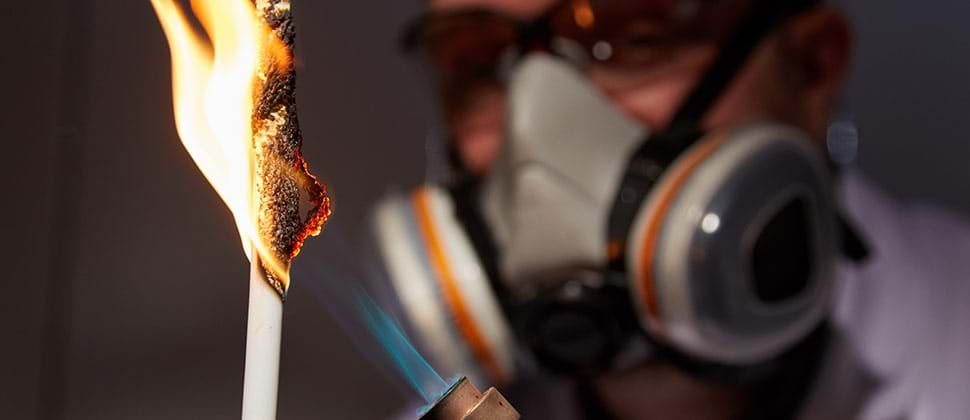
NewsInformation Center
Flammability Testing of Textiles: Key Considerations
2023/07/14
Textile Flammability testing is an important aspect of ensuring the safety and compliance of textile products. It involves evaluating the ability of textiles to resist or retard the spread of flames and the extent of heat release when exposed to a fire source. Here are some key considerations for flammability testing of textiles:

1. Regulatory Standards: Different countries and regions have their own flammability testing standards and regulations. It is important to be familiar with the specific standards applicable to your target market. For example, in the United States, the Consumer Product Safety Commission (CPSC) has established flammability standards for various textile products.

2. Test Methods: There are several test methods available for flammability testing of textiles, including the Vertical Burn Test (ASTM D6413), the Horizontal Flame Test (ASTM D6413), and the 45-Degree Angle Test (ISO 6940). Each test method has its own specific requirements and procedures. Select the appropriate test method based on the intended use and regulatory requirements of the textile product.
3. Sample Preparation: Prepare representative samples of the textile product for testing according to the specified requirements of the test method. This may involve cutting samples of specific dimensions, removing any surface finishes or coatings, and conditioning the samples to standard temperature and humidity conditions.
4. Ignition Source: The test methods typically involve exposing the textile samples to a controlled ignition source, such as a small flame or a gas burner. The size and duration of the ignition source may vary depending on the test method.
5. Test Parameters: The test parameters include the flame spread rate, time to ignition, afterflame time, afterglow time, and heat release rate. These parameters are measured and recorded during the testing process to assess the flammability performance of the textile.
6. Test Apparatus: Flammability testing is usually conducted using specialized testing equipment, such as a flammability chamber or a test rig. These apparatuses provide controlled conditions for the ignition and evaluation of the textile samples.
7. Test Evaluation: After conducting the flammability tests, the results are evaluated against the specified criteria or standards. This evaluation determines whether the textile product meets the flammability requirements or if further modifications or treatments are necessary to enhance its fire resistance.
8. Product Safety: Flammability testing is crucial for ensuring the safety of textile products, especially those intended for use in environments where fire hazards are present, such as bedding, upholstery, or protective clothing. By complying with flammability standards, manufacturers can minimize the risk of fire-related accidents and enhance consumer confidence in their products.
In summary, flammability testing of textiles is a critical step in ensuring product safety and compliance. By following the appropriate test methods, standards, and procedures, manufacturers can assess the fire resistance of their textile products and take necessary measures to improve their flammability performance.
Previous: What are some common reasons for zipper failure during the ASTM D2061 test?
N e x t : Common Challenges in Zipper Strength Testing and Solutions



